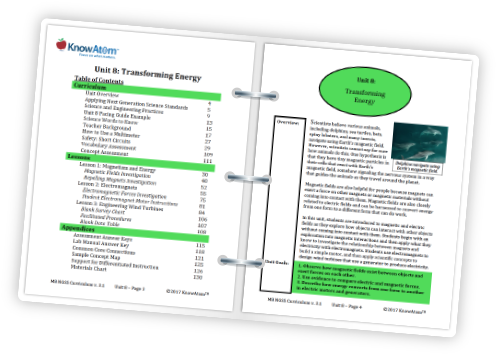In 8th grade, students explore more complex phenomena, systems, and cycles. As scientists and engineers, students analyze patterns and make predictions about future events as they investigate real-world phenomena and designed processes across nine month-long units that integrate life science, Earth and space sciences, physical science, and technology/engineering.

Unit 1
Unit 2
Unit 3
Unit 4
Unit 5
Unit 6
Unit 7
Unit 8
Unit 9
In Unit 1 Matter and Movement, students are introduced to matter and energy as they explore how scientists and engineers design materials with specific properties to address a wide range of societal needs.

In Unit 2 Earth and the Solar System, students use scientific studies that took place on the International Space Station with the astronaut Scott Kelly, data collected by the rover Curiosity that is exploring the planet Mars, and information about how the space station was built in space to explore gravity’s effects within the solar system.

In Unit 3 Earth’s Changing Climate, students explore how the sun’s uneven heating of the planet drives weather and climate and the relationship between human activities and global warming.

In Unit 4 From Molecules to Organisms, students explore the life forms that live on Earth, analyzing the cellular structures that make up complex organisms and how different groups of cells work together to keep the organism functioning properly.

In Unit 5 Inheriting Traits, students explore how DNA holds the instructions for making proteins that living things need to survive and how DNA is passed on from parent to offspring.

In Unit 6 Human Genetics, students explore how both genetic information and the environment influence how a population develops over time. They investigate different kinds of evidence for life’s shared ancestry and then experiment with how adaptations help some organisms survive.

In Unit 7 Changing Environments, students explore the dynamic nature of ecosystems and how disturbances affect them by investigating the food webs and invasive species in Lake Michigan.

In Unit 8 Transforming Energy, students explore the relationship between magnetism and electricity by investigating how animals navigate using Earth’s magnetic field.

In Unit 9 Waves and Information Transfer, students explore the properties of mechanical seismic waves to investigate the relationship between waves and energy and then evaluate how light waves can be used to communicate and transmit information.
